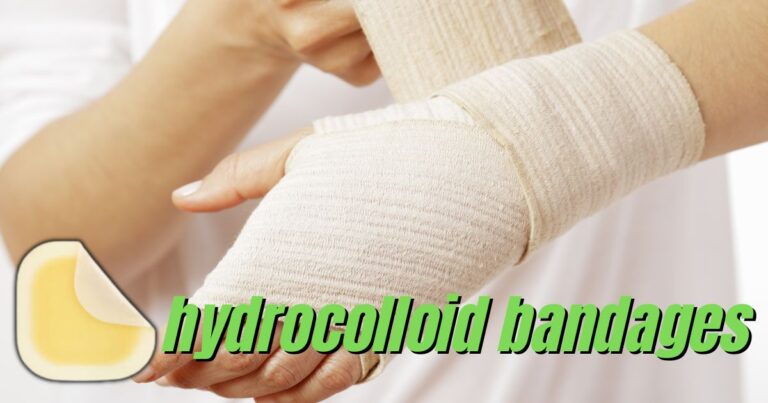Introduction:
In terms of wound care, original solutions are always developing to increase the healing process. One of such progress is the application of advanced hydrocolloid bandages. These amazing wound dressings changed the way that we approach wound healing, offering many advantages that help to faster recovery and improved results.
Understanding Hydrocolloid Bandages:
What Are Hydrocolloid Bandages?
Hydrocolloid bandages are a type of wound dressing that have designed to support the perfect wound healing. Cool of a gel-forming material and a sticky outer layer, these bandages make a dark environment near the wound, which is proven to speed up the healing process.
How Do They Work?
These bandages work by cooperating within the wound’s ooze, the fluid that oozes from the wound. The gel-forming factors within the bandage take in this ooze, forming a gel-like substance. This gel not only holds the wound hydrated but also provides a block against the external pollution, decreasing the chance of infection.
Advantages of Advanced Hydrocolloid Bandages:
Rapid Healing:
The dark environment formed by hydrocolloid bandages help cell movement and growth , leading to faster wound stop. This speed up the healing process can much decrease the overall recovery time.
Enhanced Comfort:
The elasticity and buffer properties of these bandages supply to a higher level of ease for the patient. They match to the body’s shape, allowing for natural movement without compromising the wound’s safety.
Minimized Scarring:
By promoting a perfect wound healing, the hydrocolloid bandages can help to minimize the injury. The moist environment decreases the chance of hurts forming, resulting in soft , less marked scars.
Infection Prevention:
The sticky outer layer of the bandage stops the entry of bacteria and other pollution , decreasing the risk of infection. Above, the gel-forming factors that have been proved to have antibacterial properties that further secure against infections.
Applications of Hydrocolloid Bandages
Minor Wounds:
Hydrocolloid bandages are perfect for small wounds such as cuts, scrapes and bubbles. They provide a safety block while make sure the wound remains dark for perfect healing.
Pressure Ulcers:
Patients with limited motions are given to developing pressure ulcers. Hydrocolloid bandages that can help in the healing of these ulcers by forming an environment that supports tissue renewal.
Post-Surgical Wounds:
After the surgical methods, wound healing is important. Hydrocolloid bandages offer an aseptic covering that speeds up the healing and decreases the risk of surgical site infections.
Changing the Dressing: A Step-by-Step Guide
- 1. Wash your hands completely.
- 2. Softly remove the old bandage.
- 3. Wash the wound area with soft soap and water.
- 4. Touch the wound area dry.
- 5. Apply the hydrocolloid bandage safely through the wound.
Conclusion:
Advanced hydrocolloid bandages have changed wound care by providing an perfect environment for healing while make sure the patient’s comfort and benefits. Their ability is to rise the cut relieve, decrease pain and cover against the pollution to makes them a valuable device in new health care.
FAQs:
- 1. Are hydrocolloid stop the infection?
Hydrocolloids do not directly stop infections, but they can form a block that may help prevent external pollution from entering wounds, likely decreasing the risk of infection.
2. Are hydrocolloid reduce pain?
Hydrocolloid dressings can help pain comfort by creating a dark environment that promotes healing and decreases rubbing on the wound, often chief to decreased pain.
3. What are the advantages of hydrocolloids?
Hydrocolloid dressings offer advantages like maintaining a dark wound environment, promoting healing, and given that a protective block against pollutions, which can help to faster recovery and decreased risk of infection
4. How do you get off hydrocolloid bandages?
To remove hydrocolloid bandages, lightly skin them off by stretching the limits away from the skin while supporting the around skin to minimize pain or damage.
5. Are hydrocolloid bandages fit for all kinds of wounds?
Hydrocolloid bandages are right for many types of wounds, such as small cuts, bubble, and surface ulcers, but their strength may vary located on wound size, location, and specific healing feature.


